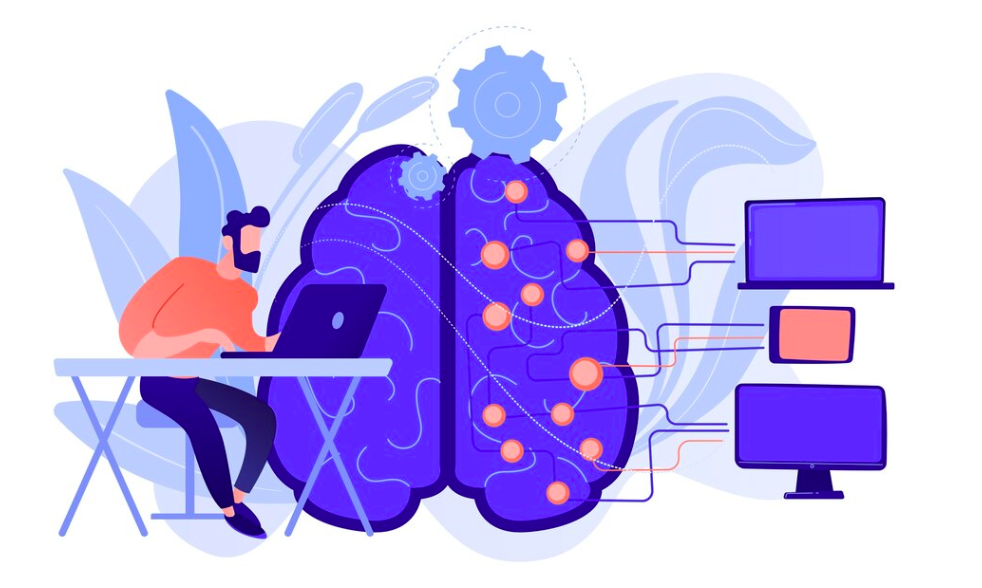In the ever-evolving landscape of artificial intelligence, one term that has gained unprecedented prominence is “Deep Learning.” This powerful subset of machine learning, known for its ability to automatically learn and make decisions without explicit programming, has revolutionized various industries. Deep Learning, inspired by the structure and function of the human brain, has become a cornerstone in the development of intelligent systems. In this comprehensive guide, we will delve into the depths of deep learning, exploring its origins, key concepts, applications, and the future it promises.
Understanding the Foundations:

1. Origins of Deep Learning
Deep learning finds its roots in neural networks, with inspiration drawn from the intricate workings of the human brain. The journey began with the perceptron, a basic building block, and evolved through the years with the advent of backpropagation and the development of sophisticated architectures like convolutional neural networks (CNNs) and recurrent neural networks (RNNs). The evolution of these models has marked a significant leap in the capabilities of deep learning.
2. Key Components
At the heart of deep learning are neurons, layers, and weights. Understanding these fundamental components is crucial to grasp how deep learning models function. Deep learning layers process information hierarchically, and weights are adjusted during training to optimize model performance. This iterative process is the essence of deep learning’s ability to uncover intricate patterns within data.
Navigating the Landscape:

3. Types of Deep Learning Models
Explore the diverse range of deep learning models, each designed for specific tasks. From image recognition using CNNs to natural language processing with recurrent neural networks (RNNs) and transformer models, the versatility of deep learning is evident. These models showcase the adaptability and scalability of deep learning, making it a go-to solution for various real-world challenges.
4. Training Deep Learning Models
Training a deep learning model involves feeding it with labeled data and adjusting the weights through backpropagation. Deep learning models learn from experience, improving their performance over time. Learn about the importance of datasets, the role of optimization algorithms, and the significance of hyperparameter tuning in this critical phase. Deep learning’s ability to iteratively refine its understanding of data sets it apart as a powerful tool for complex problem-solving.
Applications Across Industries:

5. Healthcare
Discover how deep learning is making strides in healthcare, from medical imaging and diagnosis to drug discovery. Its ability to analyze complex patterns in medical data is paving the way for more accurate and timely diagnoses. Deep learning algorithms, when applied to healthcare data, exhibit a remarkable capacity to detect subtle patterns that might escape human observation, leading to enhanced medical decision-making.
6. Finance
In the financial sector, deep learning is employed for fraud detection, algorithmic trading, and risk management. Explore how these applications enhance decision-making processes and contribute to a more robust financial ecosystem. Deep learning’s data-driven approach is proving invaluable in uncovering fraudulent activities, optimizing trading strategies, and mitigating risks in a dynamic financial landscape.
Future Prospects and Challenges

7. Future Trends
Anticipate the future of deep learning with insights into emerging trends such as reinforcement learning, explainable AI, and the integration of AI with other cutting-edge technologies like quantum computing. The future of deep learning holds promises of continual innovation, with advancements in areas such as reinforcement learning providing new avenues for exploration and application.
8. Challenges Ahead
Despite its remarkable progress, deep learning faces challenges such as interpretability, ethical concerns, and the need for vast amounts of labeled data. Understanding these challenges is essential for steering the development of deep learning in a responsible and ethical direction. As deep learning continues to evolve, addressing these challenges will be crucial in ensuring its responsible and ethical integration into society.
As we wrap up this journey into the realm of deep learning, it is evident that its impact on technology and society is profound. From redefining how we approach complex problem-solving to unlocking new frontiers in various industries, deep learning is at the forefront of the AI revolution. As researchers and practitioners continue to push the boundaries of what’s possible, the future promises even more remarkable advancements in the world of deep learning. Stay tuned as we navigate these uncharted waters together, guided by the transformative power of deep learning.





